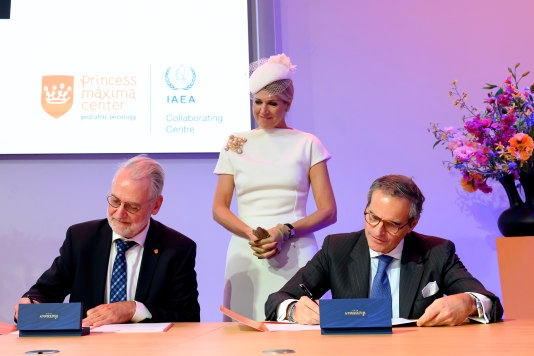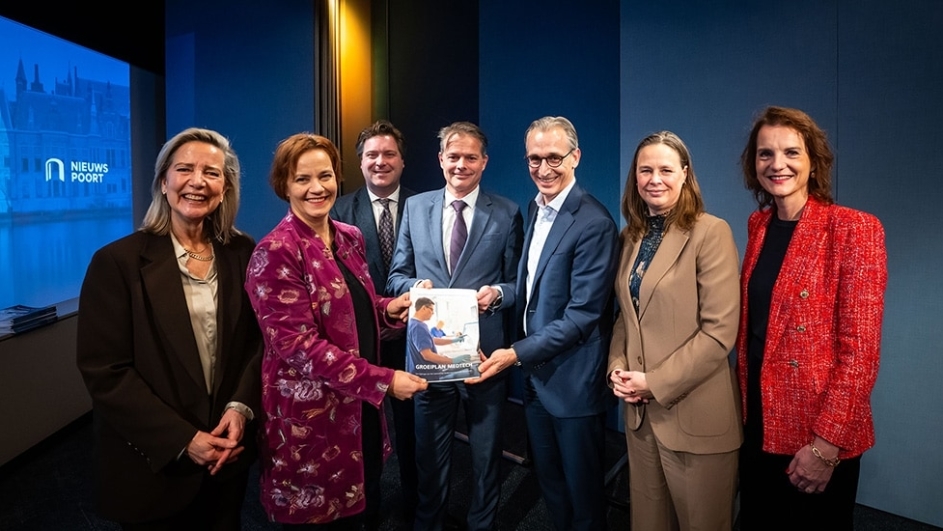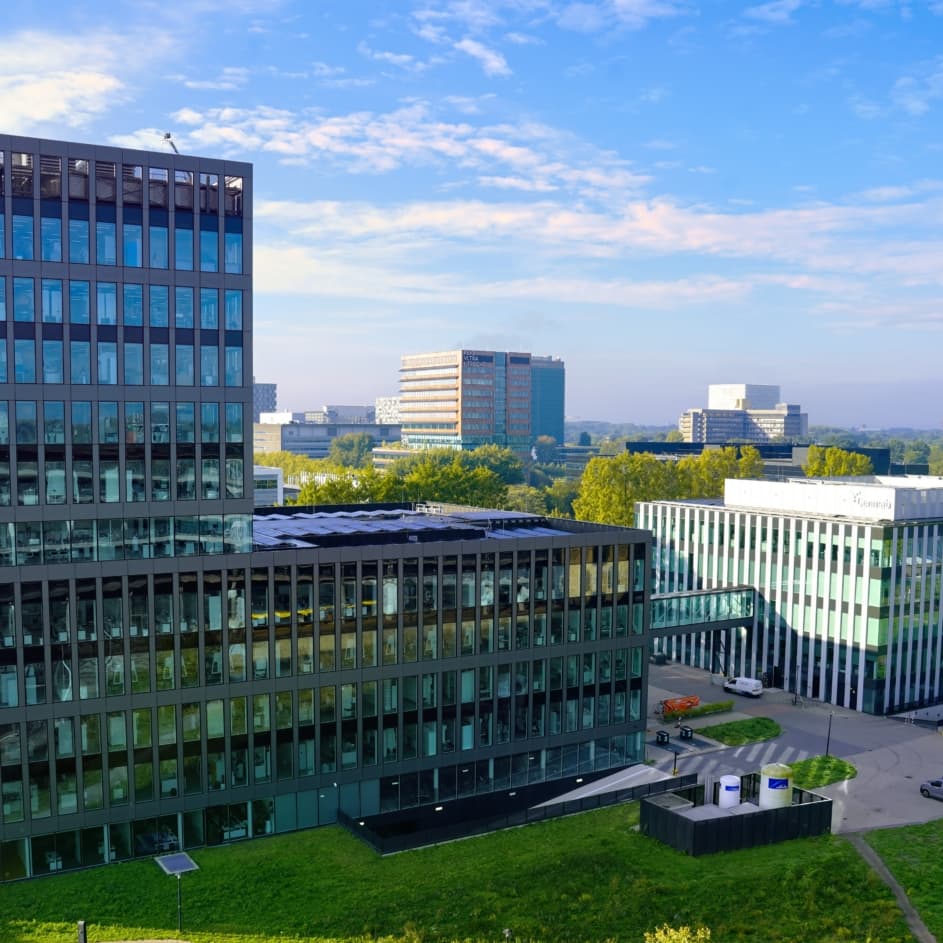ERC Consolidator Grants for seven Utrecht-based researchers

This year, seven Utrecht researchers will receive an ERC Consolidator Grant of approximately 2 million euros each. The European Union provides these grants support excellent scientists and scholars at the career stage where they may still be consolidating their own independent research teams to pursue their most promising scientific ideas. The Utrecht researchers who will receive a grant for their research are: Jesper Nederlof, Peter Ngene and Saskia Suijkerbuik (faculty of Science), Ylona van Dinther and Simon Scheider (faculty of Geosciences), Aniek Janssen (UMC Utrecht) and Jarno Drost (Prinses Maxima Centrum).
Algorithms for Complex Search Problems in Computer Science
Jesper Nederlof’s research focuses on algorithms and computational complexity, specifically on the question of how quickly certain problems can be solved exactly. In his project COALESCE, he aims to develop a theoretical framework to design more efficient algorithms for complex search problems. The central concept is the “Divide & Conquer” paradigm, where problems are broken down into smaller subproblems. While this approach is essential in computer science, a comprehensive theory that fully uses its potential is still lacking.
By combining techniques from combinatorial and algebraic complexity, Nederlof hopes to tackle long-standing questions, such as those surrounding the Travelling Salesperson Problem. This classic problem in computer science involves finding the shortest route through a set of cities, visiting each city exactly once before returning to the starting point. Current algorithms can solve this problem in a time of 2n (where n is the number of cities), but it remains an open question whether this is a fundamental barrier or if faster solutions are possible. The ERC Consolidator Grant provides Nederlof and his team with the resources to address these challenges and to contribute to designing faster algorithms that push beyond current limits.
Interface-mediated fast ionic conductivity in nanocomposite solid-state electrolytes
Associate professor Peter Ngene from the Debye Institute for Nanomaterials Science aims to unravel why the ionic conductivity of certain solids can increase or decrease by thousands of folds at their interface with other solids. The ability of solids to conduct ions is the bedrock of electrochemical devices, such as batteries, fuel cells, electrolysers and sensors. However, ion conductivity of most solids is not fast enough for these applications, which is why researchers have been looking for strategies to achieve fast transport of ions within these solids.
By uncovering the fundamental mechanisms driving these drastic changes in conductivity at solid interfaces in nanocomposites, Ngene aims to pave the way for designing new materials with superior ionic conductivity. Such breakthroughs could revolutionize the development of next-generation electrochemical devices for energy conversion and storage, supporting global efforts toward energy and environmental sustainability.
Spatial and temporal regulation of cell competition
In our body, cells are constantly competing with each other for survival and growth. Tumor cells also use this competition to take over, thereby harming healthy cells in the process. Dr. Saskia Suijkerbuijk receives an ERC Consolidator Grant for her project to deeply understand this battle between cells. Her team will first focus on colon cancer, studying how tumor cells push out healthy cells and use signals from their surroundings to grow. “Tissues are made up of many cells that compete with each other. Understanding how this competition works is key to learning more about cancer,” says Suijkerbuijk.
To study how tissues interact, her team uses microscopic lab-grown versions of organs, called organoids. By placing tumor cells and healthy cells together in these organoids, the team can see how the cells affect each other. They specifically look at how tumor cells use signals from their surroundings to grow and weaken nearby healthy cells. This research provides vital insights into how tumors not only manipulate their current environment but also adapt to survive and grow in new locations.
For this project, Suijkerbuijk collaborates with academic labs both inside and outside Utrecht University. “This grant allows us to take big steps in understanding how tumors compete with healthy cells in their environment,” she explains. While this research focuses on understanding the basic processes, it could eventually lead to breakthroughs in cancer studies.
RESET: mega-thRust Earthquake SystEm Theory
Ylona van Dinther is known worldwide as a leading earthquake researcher. More than a third of the world’s population lives in areas with a significant earthquake risk. For a more reliable assessment of these risks, van Dinther is working on an integrated system to image future earthquake locations.
Such a model requires an enormous amount of computing power. That is why she wants to make use of the latest developments in computer sciences. Her research program RESET integrates new measurements and the physics of plate tectonics, e.g., using weather forecasting techniques. This should not only image future earthquake locations and sizes, but also explain recent phenomena with new processes. As a result, it might be possible to also say more about when earthquakes will occur in the future.
GeoTrAnsQData: Transforming Geographic Data to Answer Questions
This project develops transformative Geographic Question-Answering (GeoQA), a way to automate the creation of tailored maps to exploit the analytic potential of various geodata sources. Unlike current QA systems that retrieve stored answers, transformative GeoQA uses conceptual transformation graphs to model the workflows needed to analyse and generate answer maps, ensuring transparency and reproducibility. This approach alleviates the need for advanced GIS skills, making analytic data resources accessible to non-experts.
In addition to advancing GeoAI, this project contributes to geographic information theory by formalizing how geodata can be quantified, transformed, and analyzed for diverse purposes. The project combines conceptual modeling and knowledge graphs with cutting-edge AI to expand our analytic abilities and to construct explainable, valid GeoAI systems.
ERC Consolidator Grant at UMC Utrecht and Princess Máxima Center

Princess Máxima Center and International Atomic Energy Agency join forces to improve radiotherapy treatments for children
In the presence of Her Majesty Queen Máxima, representatives of the Princess Máxima Center and the International Atomic Energy Agency (IAEA) today signed a four-year partnership aimed at improving practical knowledge on the use of radiotherapy for children with cancer.

MedTech sector launches national growth plan: technology must support Dutch healthcare and structurally strengthen economic growth
The Dutch MedTech sector is presenting an ambitious growth plan today that aims to elevate the Netherlands to the European top by 2035. UMC Utrecht contributed to this plan, and it was co-presented by Carina Hilders (Chair of the UMC Utrecht Executive Board).

Parking rates at Utrecht Science Park to change from 1 January 2026
From 1 January 2026, parking rates at Utrecht Science Park will be adjusted. The Municipality of Utrecht and the owners of the publicly accessible parking facilities at Utrecht Science Park have reached a joint agreement on this.

Wennink plan: Life Sciences and biotechnology are important growth drivers for the earning capacity of the Netherlands
The Dutch Life Sciences and biotechnology sector can make a much larger contribution to the Netherlands’ economic strength. This is shown in a new growth strategy presented today as part of Peter Wennink’s advisory report. The report also highlights Utrecht Science Park as one of the key innovation locations and sources of progress and growth.